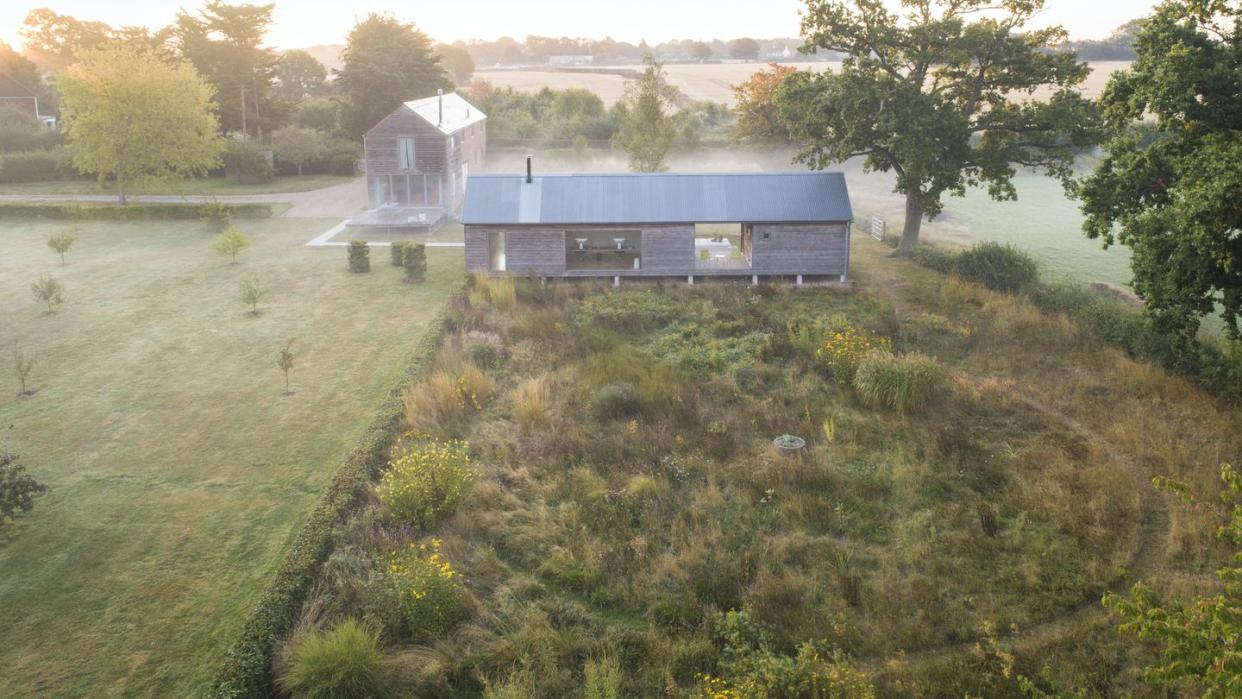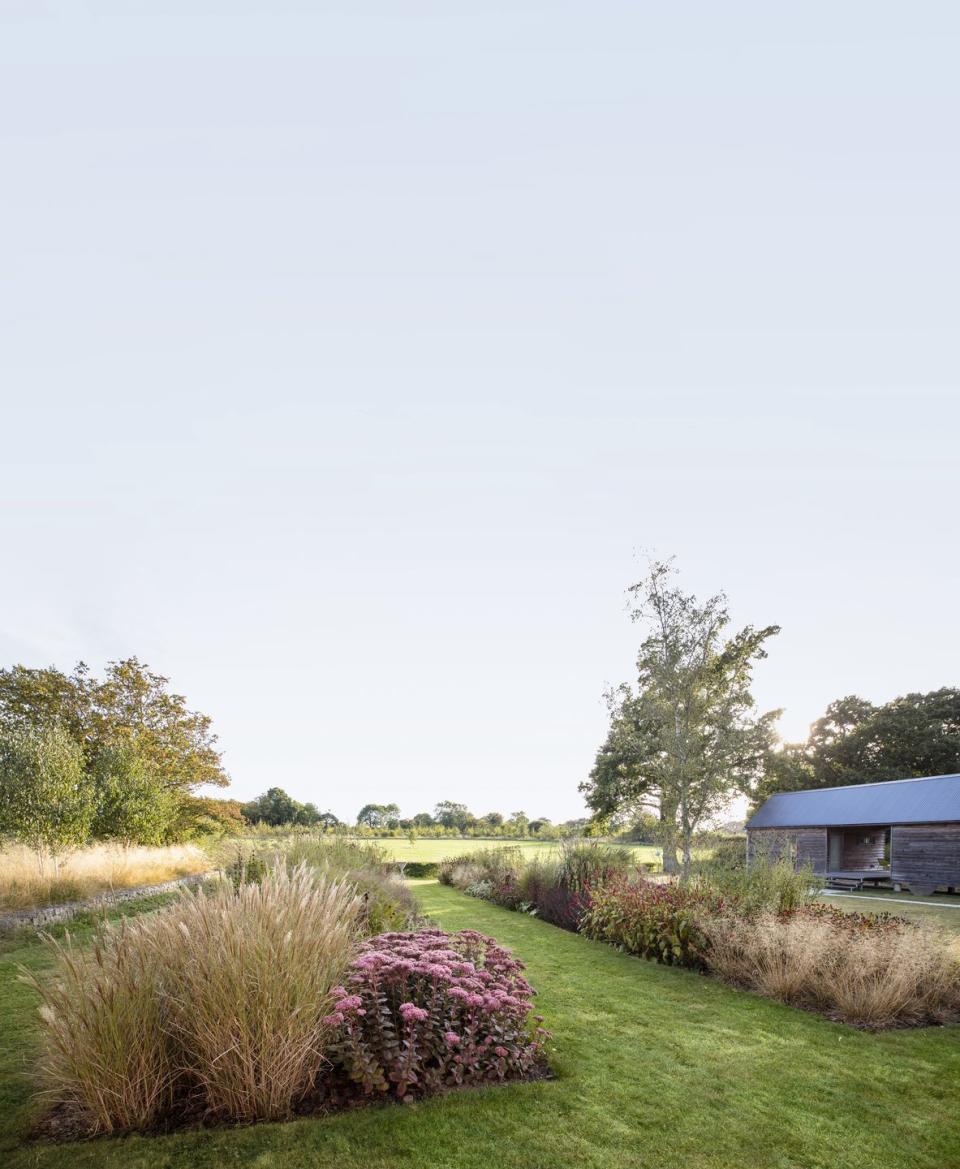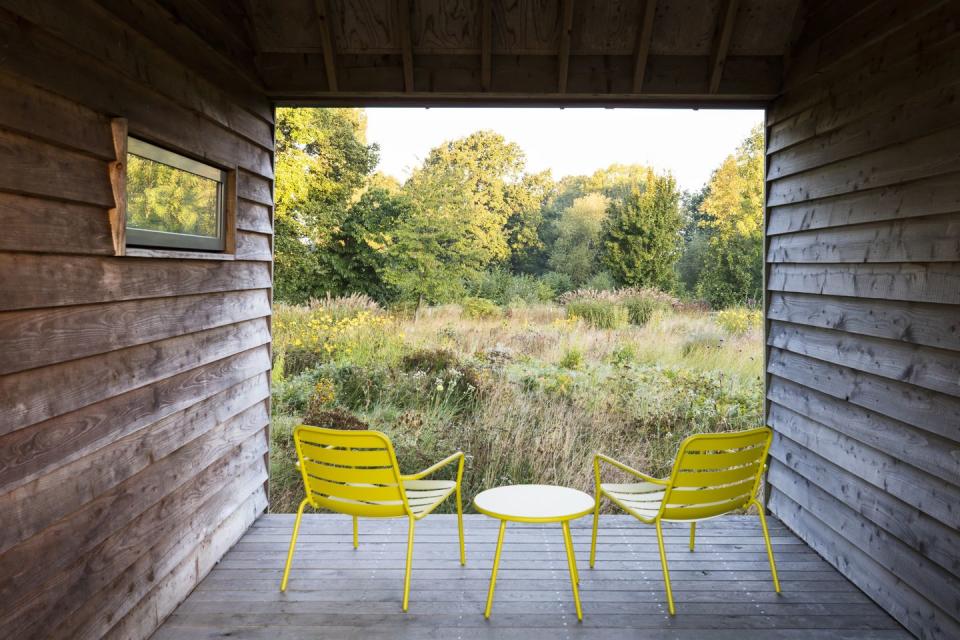Tour an Indigenously Wild English Garden with Over 550 Native Trees

Step one: Plant 550 native trees. That was how fine art photographer turned gardener and ceramicist Emma Burrill began a decade ago, transforming nearly seven acres of scruffy horse pasture into the garden of her dreams.
Charmed by the property’s old buildings, Burrill and her husband gave the farmhouse a modern renovation and turned the old stables into an art studio—but the fields ignited Burrill’s fantasy of a prairie-style haven of biodiversity. Her passion is rooted in the playfulness of gardening. “The process keeps me calm and sane,” she says. “I love the slowness of it, like watching 40-centimeter little whips I planted 10 years ago grow into 30-foot trees.”

Burrill also marvels at wild orchids colonizing amid her planted perennials and grasses. “To have it half-planned and half-wild links the gardens to the fields and woods beyond, creating connected corridors for wildlife,” she says. To her delight birds, mice, and foxes have begun to reclaim habitat that once was heavily sprayed for agricultural use, and emerging bee populations are particularly keen for her early flowering plum, pear, and almond trees.

In the wildflower meadow behind the studio, Burrill indulges her love of North American grasses; she’s partial to their calm-inducing wispiness and “almost sculptural shape and seed structure, even when dormant.” A mowed circular path in the prairie behind the studio adds a graphic modernist element, juxtaposed with two large rectangular perennial borders enclosed by the studio and the house.
“It’s a completely different planting style than a traditional British garden and I love that contrast,” she says. “I’m a tidy person by nature, but I try not to take that into the garden. Here I leave piles of twigs and leaves on the ground. It’s so much better for wildlife.”
2023 World's Most Beautiful Gardens winner for Most Ingeniously Wild; Design by Emma Burrill.
You Might Also Like

